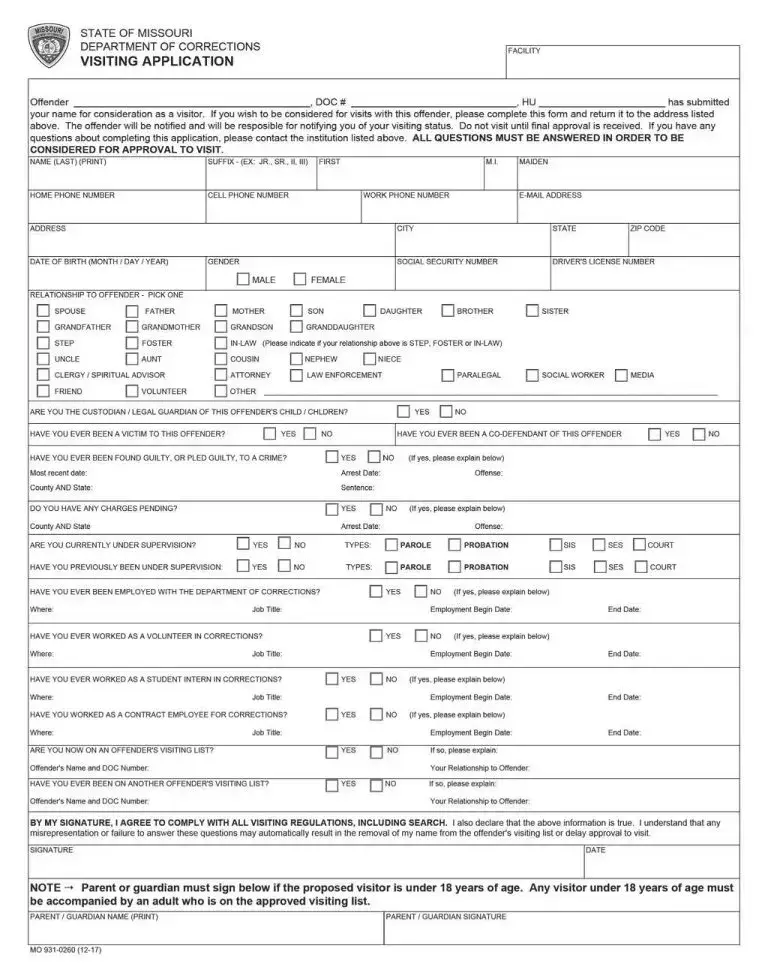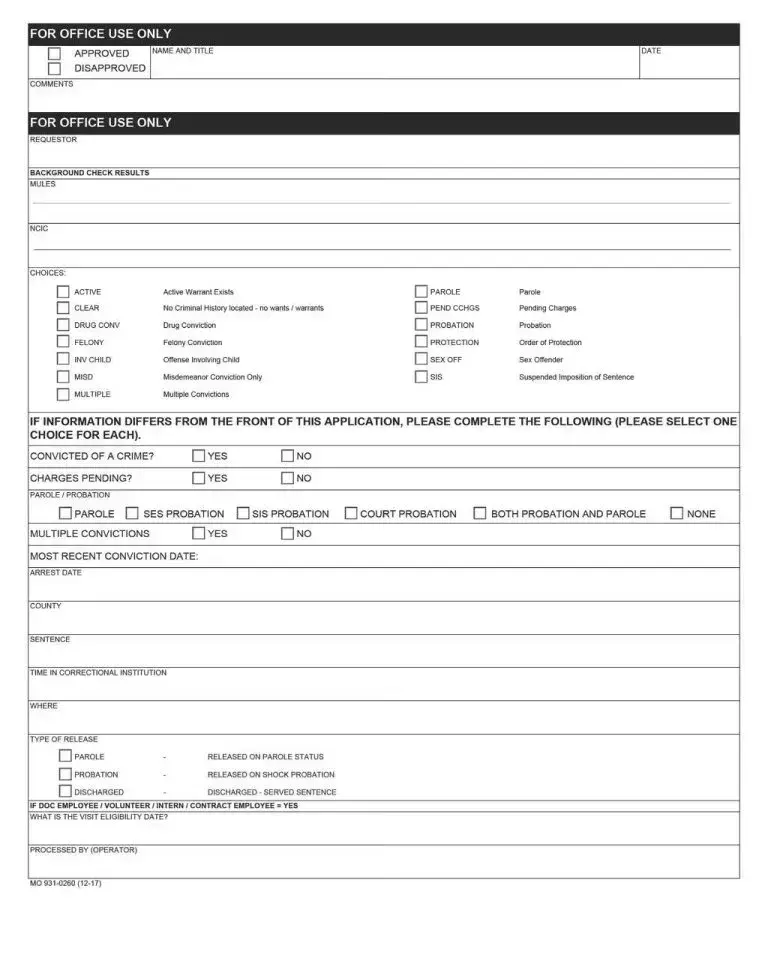What is the purpose of the Missouri Department of Corrections form?
This form is used to collect necessary background information for individuals who are applying for positions or services within the Missouri Department of Corrections. It helps verify an applicant's criminal history and eligibility for work or volunteer activities.
Who needs to fill out this form?
Any individual applying for employment, internships, or volunteer positions with the Missouri Department of Corrections must fill out this form. This also includes contract employees who may work in correctional facilities or related environments.
What types of background checks are conducted?
Background checks include a review of criminal history records accessed through MULES (Missouri Uniform Law Enforcement System) and NCIC (National Crime Information Center). These checks identify any active warrants, felony or misdemeanor convictions, and other relevant legal statuses.
What should I do if I have a criminal history?
You must disclose all relevant information about your criminal history on the form. If you have been convicted of a crime or have pending charges, there are specific sections of the form where you can provide this information. Transparency is critical in this process.
Can I still apply if I have a felony conviction?
Yes, you can still apply even if you have a felony conviction. However, eligibility will depend on the nature of the offense and the specific role you are applying for. Each case is assessed on an individual basis.
What is meant by "Order of Protection" on the form?
An Order of Protection is a legal order used to protect someone from harassment or violence. If you have been the subject of such an order, you need to indicate this on the form. This information is relevant for assessing suitability for certain positions.
How does the Missouri Department of Corrections make approval decisions?
Approval decisions are based on the information provided in the form alongside the results from background checks. The form is reviewed by authorized personnel who evaluate the details against department policies and legal requirements. Applications may be approved or disapproved accordingly.
What happens if my application is disapproved?
If your application is disapproved, you will be notified in writing. The notification may include reasons for disapproval and, in some cases, options or steps you can take if you feel there has been an error in assessing your background.


